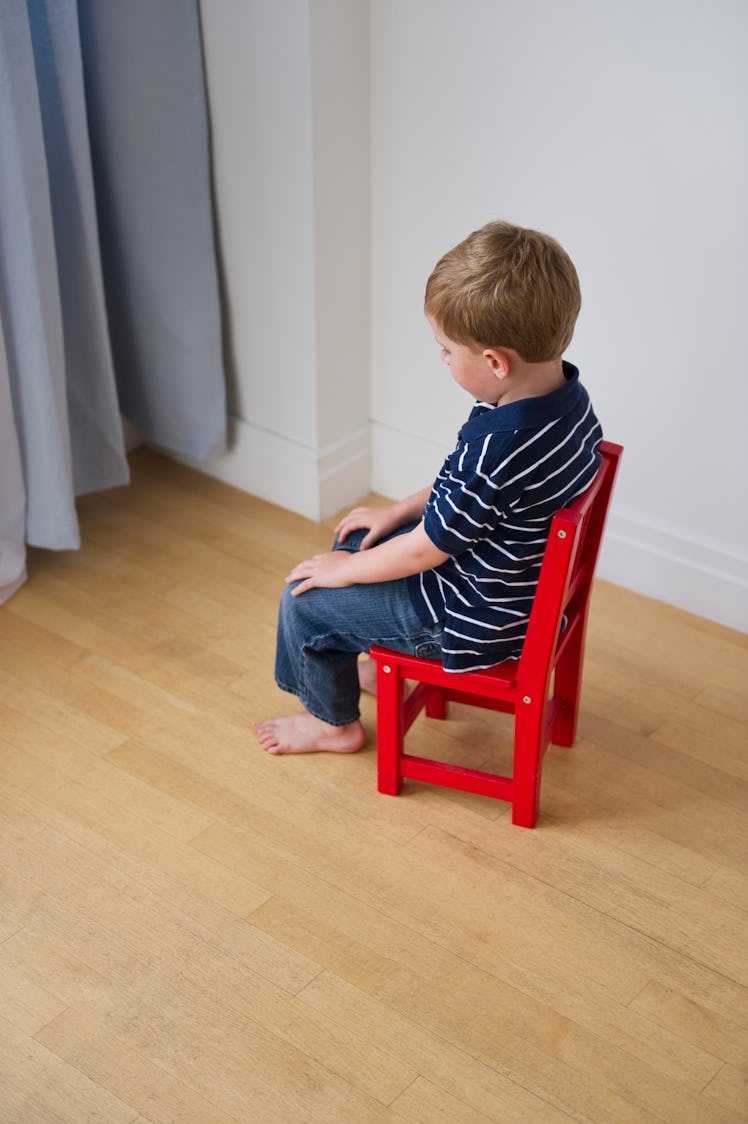Timeouts Can Help Children, But You’re Doing Them Wrong
Timeouts don't make children feel rejected and neglected — parents who are bad at doling them out do.

Timeouts get a bad rap. Experts in some corners have criticized timeouts for stoking insecurities and triggering children with traumatic histories, but a new paper from the American Psychological Association concludes that these alarmist claims aren’t true. So are timeouts effective? Timeouts, known as “time out from positive reinforcement (TOPR)” in the literature, can foster secure attachment, reduce negative behaviors, and even correct psychological problems resulting from past abuse and neglect — but only within the context of a secure, loving family.
Timeouts are not effective as “a stand-alone parenting strategy; rather, it was part of a stepped process, in which effective implementation was dependent on mastery of positive reinforcement of the child as a first step,” University of Sydney researchers Mark Dadds and Lucy Tully wrote in the study. “In other words, enhancing the positive relationship between parent and child (“time-in”) was necessary for timeout to be effective.”
Timeouts have increased in popularity in the post-spanking age of parenting, and TOPR is currently the most common form of discipline in the U.S., second only to “verbal explanations.” The key to effective timeouts, however, is ensuring that children have something to lose when they’re separated from the family. If you’re not playing with them, giving positive feedback, and praising them during “time-in,” kids are unlikely to see timeouts as unique, let alone a deterrent. This may cause timeouts to be ineffective, which may spur parents, in turn, to resort to harsher disciplinary tactics, such as yelling or spanking, research shows.
Analyzing more than 80 studies on timeouts across four key dimensions of child development theory, Dadds and Tully confirmed that timeouts were not only safe but a recommended form of discipline, because it requires parents to make children feel secure first. Although they recommend more research into disciple for children who’ve been abused and neglected, several studies have found that timeouts in a stable environment can help even these children “learn to replace feelings of fear and pain with feelings of control and safety,” the authors write.
For parents who are still concerned about implementing timeouts in a safe and effective way, the American Psychological Association has also issued the following guidelines.
American Psychological Association Timeout Guidelines
- Children should only receive timeouts for actions they have control over. They should never be used when kids are unable to perform an action, lack understanding, make mistakes, or act out of fear.
- If there is not an observable and timely reduction of the problem behavior, parents are probably doing it wrong. “The effectiveness of TOPR implementation should be judged in terms of observable and timely reductions in the problem behavior, thus, in the rapidly diminishing need to use TOPR.”
- To keep children secure, parents should remain calm during the entire timeout process.
- Timeouts must be a part of a broader behavioral system that’s not just about discipline, but about warmth and rewards. This teaches kids to replace negative behaviors with positive ones.
- Timeouts “must not carry any parental communication of abandonment, isolation, and rejection during the TOPR and return to time-in phases.” Returning to a warm parent-child relationship after the timeout is over is especially crucial here and sends a message that the problem was the behavior, not the child. “Throughout, the child remains safe, valued, and loved.”
- Kids should be taught the basic rules of timeouts prior to the conflict and the disciplinary action resulting from it. In general, they should know what to expect when they misbehave.
- Parents need to explain to kids what they’re getting a timeout for, so they understand what led to it.
- Timeouts should be an objective, consistent part of a family’s “ecological system of shared perceptions of what is right,” and not doled out arbitrarily or based on the parent’s emotions.
- Timeouts “should be applied equally and fairly across children in a family.”
This article was originally published on